OMG OMG-OCSMP-MBI300 OMG-Certified Systems Modeling Professional - Model Builder – Intermediate Exam Practice Test
OMG-Certified Systems Modeling Professional - Model Builder – Intermediate Questions and Answers
Choose the correct answer.
A system engineer has created a SysML block structure for his system-of-interest. Two of the blocks (M and E) represent system-level abstractions of components that will be designed by a mechanical engineer and an electrical engineer m their respective computer-aided design (CAD) tools.
Given that the CAD models are wrapped as blocks B_mcad and B_ecad, what type of diagram should the system engineer use to quantitatively relate the properties of B_mcad and B_ecad to their system level abstractions M and E respectively?
Choose the correct answer
How would a modeler refine a use case textual narrative?
Choose the correct answer.
Given the following diagram:
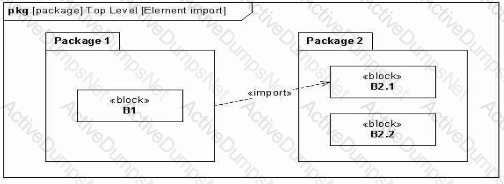
Which diagram is correct?
A)
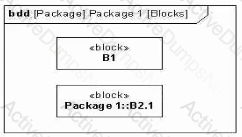
B)
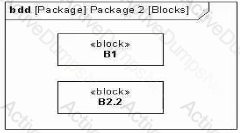
C)
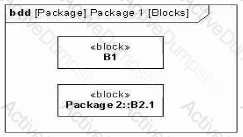
D)
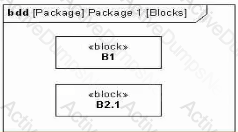
Choose the correct answer.
Block 1 has a value property 'a' part 1. typed by Block! sends the message Ml If a»0; otherwise it sends message M2.
Which diagram depicts this scenario?
A)
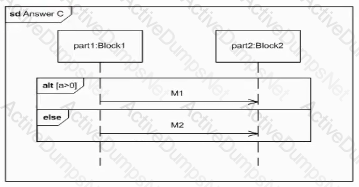
B)
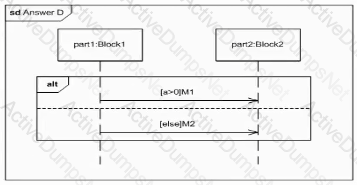
C)
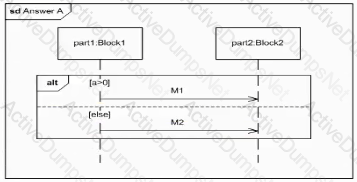
D)
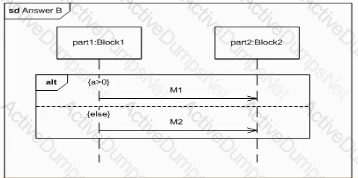
Choose the correct answer
Given the following diagram:
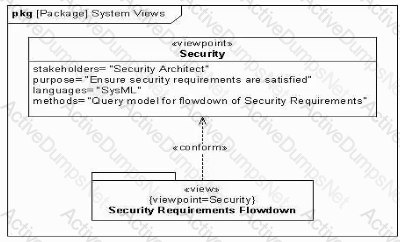
Which statement is true?
Choose the correct answer
Where may constraint blocks be defined?
Choose the correct answer.
What is the best way to specify the behavior of a functional requirement?
Choose the correct answer.
Given the following model:
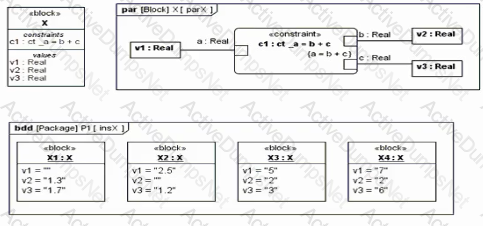
Which statement is true?
Choose the correct answer.
Assume the following state machine fragment Is In the A-State when the event evC arrives.
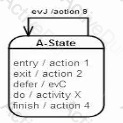
What is the order of behaviors that are executed after evj arrives?
Choose the correct answer.
Consider the following two activity diagram fragments labeled Fragment 1 and Fragment 2. The JoinSpecification for Fragment 1 is completely specified, but the JoinSpecification for Fragment 2 is not.
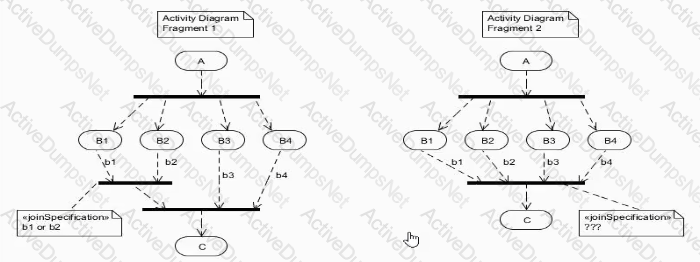
Which join specification for Fragment 2 will make it exhibit the same behavior as fragment 1? Assume that activities with the same names exhibit the same behavior
Choose the correct answer.
When is it possibly useful to create property-specific types?
Choose the correct answer.
Which option correctly describes the effect of an object flowing into and out of a data store?
A)

B)

C)

D)

Choose the correct answer.
What are streaming parameters?
Choose the correct answer.
How should a generalization set between Shape (superclass) and subclasses Polygon. Rectangle and Triangle be marked?

Assume the block is in A-State when two evCs ate received.
What is a plausible sequence of behaviors that occurs when a subsequent evG occurs?
Choose the correct answer
How is a testCase used to validate a requirement?
Choose the correct answer.
Given the following diagram:

What needs to be determined in order to model the connection between components s0 and u3 in more detail?
Choose the correct answer
The following are behavioral requirements for an automobile electric window
(1) When the window button is moved into the up position and the window is not fully up the window shall begin to move up
(?) When the window button is moved into the down position and the window is not hilly down, the window shall begin to move down
(3) When the window button is released or the window reaches the fully up or fully down position, the window shall stop moving
(4) Requirements (1-3) apply when the ignition is on. However, turning the ignition off shall lake effect only after the window has stopped moving.
Which state machine diagram fragment describes the required behavior?
A)

B)

C)

D)

E)

Choose the correct answer.
Given the following diagram:

Which SysML, relationship should be used to relate c1 to Weight_Requirement for best semantics?
Choose the correct answer.
The essentials of a laptop battery capacity model are shown In the following diagrams (where the value types W, h and Wh stand for watl, hour, and watt-hour respectively). Assume that the instance values shown are inputs, and that nothing relevant has been omitted.
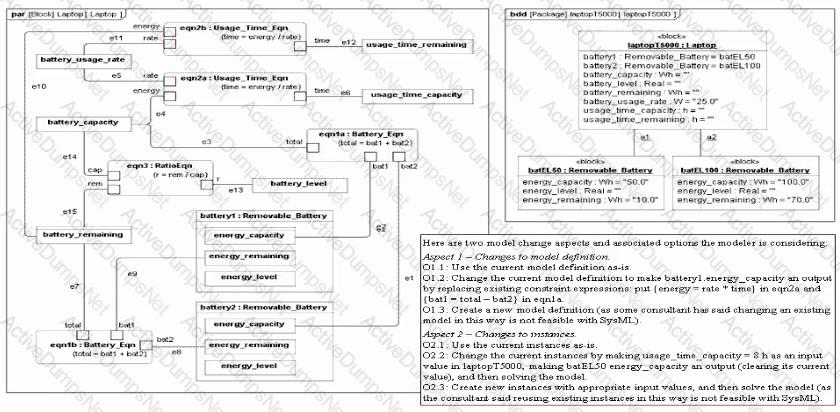
The designer needs to determine what the energy_capacity of battery 1 should be to enable a laptop usage_time_capacity time of 8 hours. Which combination of the options listed in the text box in the figure will achieve this Intent with minimal changes (including minimal new aspects)?
Choose the correct answer.
Which stereotype depicts that an object node will replace existing tokens with newly arriving tokens when the specified upper limit is reached?
Choose the correct answer.
A system engineer has created the following model of a tank system composed of two tanks and a pipe connecting them:
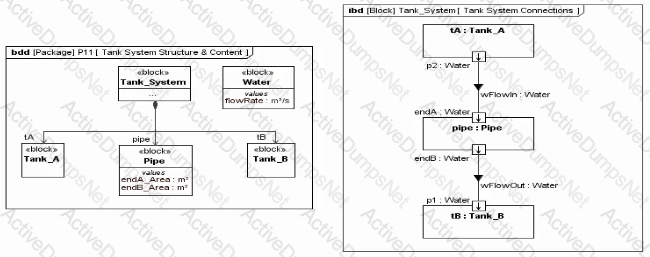
The system engineer wants to mathematically relate the flow of water through the pipe using the following mass conservation equation: Tank_System wFlowin flowRate * Tank_System pipe endA_Area = Tank_System wFlowOut flowRate * Tank_System pipe endB_Area How would the system engineer model this in SysML?
Choose the correct answer
How ate use cases and requirements used for requirements analysis in SysML?
Choose the correct answer.
Which SysML construct specifies a probability distribution to the values of a property such as a basic interval distribution between min and max?
Choose the correct answer.
Given the following bdd:

Which Ibd corresponds?
A)

B)

C)

D)

Choose the correct answer.
The formula for the determinant of a square 2X2 matrix.
|ab|
|cd|
is a'd-b'c A subsystem receives one message for each value (i e. a(v) b(v). c(v) and d(v) where v is a real number) These messages can be in any order, and the ensure sequence is followed by an "end" message. The subsystem must calculate the determinant and output it upon receipt of the end message If there are multiple messages for one value (e g . two a(v) messages), or the end message is received before all values have been received, the subsystem should signal an error.
Which state machine correctly models the required behavior? If more than one slate machine is correct, select the one with the fewest slates.
A)

B)
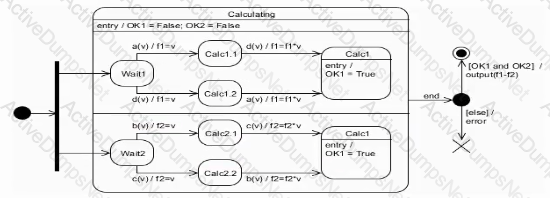
C)
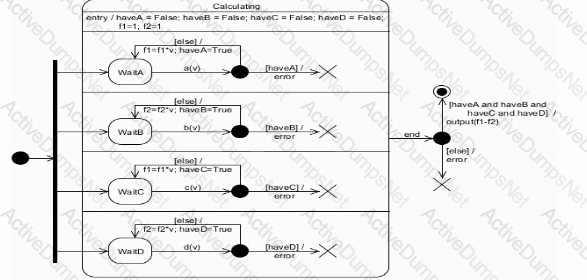
D)
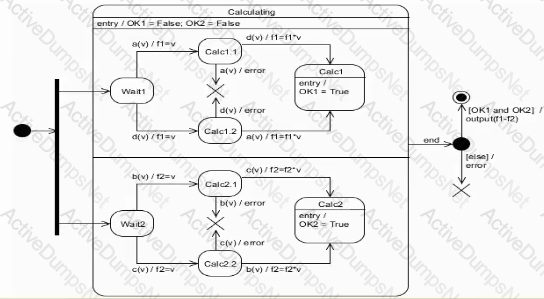
Choose the correct answer.
Given the following diagram:
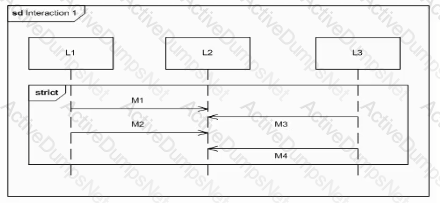
Which message ordering is valid?
